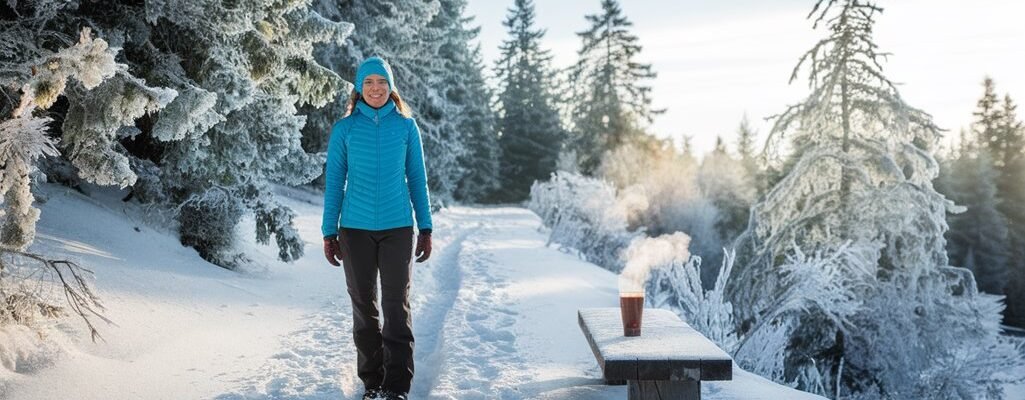
Beginner’s Guide to Winter Like a Pro
You might think winter is all about bundling up and braving the cold, but there’s more to it if you want to stay comfortable and safe. Knowing how to layer your clothes properly, prepare your home, and handle icy roads can make a big difference. Plus, staying active and managing your heating efficiently will help you get through the season without unnecessary stress. Let’s explore how you can tackle these challenges confidently.
Essential Winter Clothing and Layering Techniques
When facing cold winter days, having the right clothing makes all the difference. You’ll want to start with a moisture-wicking base layer to keep sweat away from your skin.
Next, add an insulating layer like fleece or wool to trap body heat. Finally, top it off with a waterproof and windproof outer layer to protect against the elements.
Don’t forget to cover your extremities—wear insulated gloves, a warm hat, and thermal socks. Layering lets you adjust your outfit based on activity level and weather changes, so you stay comfortable without overheating.
Choose fabrics that dry quickly and retain warmth, avoiding cotton since it traps moisture. By mastering these layering techniques, you’ll stay cozy and dry no matter how harsh the winter gets.
Preparing Your Home for Cold Weather
Keeping yourself warm is only part of staying comfortable during winter; your home needs attention too. Start by sealing drafts around windows and doors with weatherstripping or caulk to keep cold air out.
Check your heating system—replace filters and schedule a professional inspection if needed to ensure efficiency. Insulate exposed pipes to prevent freezing and bursting.
Use heavy curtains at night to trap heat inside and open them during sunny days to let warmth in. Clear gutters and downspouts to avoid ice dams on your roof.
Stock up on essentials like salt or sand for walkways to maintain safety. Finally, test smoke and carbon monoxide detectors since you’ll rely more on heating devices.
Preparing your home this way keeps you cozy and safe all winter long.
Safe Driving Tips for Icy and Snowy Roads
Although winter roads can look beautiful, they pose serious hazards that demand your full attention.
When driving on icy or snowy surfaces, slow down and increase your following distance to give yourself more time to react. Avoid sudden braking or sharp turns, which can cause skidding. Use gentle acceleration and deceleration to maintain control.
Make sure your tires are properly inflated and have sufficient tread for better traction. Keep your headlights on to improve visibility for yourself and others.
Before heading out, clear all snow and ice from your windows, mirrors, and lights. If conditions worsen, don’t hesitate to pull over safely and wait it out.
Staying calm and cautious is your best defense against winter road dangers.
Staying Active and Healthy During Winter
Since colder weather can make it harder to stay motivated, you should find enjoyable ways to keep moving and maintain your health throughout winter.
Try indoor workouts like yoga, Pilates, or bodyweight exercises to stay active without braving the cold. If you prefer the outdoors, dress in layers and choose activities like brisk walking or snowshoeing to keep your body warm and energized.
Don’t forget to stay hydrated and eat a balanced diet rich in vitamins to support your immune system. Prioritize sleep and manage stress to boost your overall well-being.
Smart Heating Solutions to Save Energy
When you want to stay warm without wasting energy, smart heating solutions offer an efficient way to control your home’s temperature.
Installing a programmable thermostat lets you set heating schedules tailored to your routine, so your home’s only warm when you need it. You can even control it remotely via smartphone, adjusting settings on the go.
Zoned heating systems allow you to heat specific rooms instead of the whole house, cutting down unnecessary energy use. Smart radiators and space heaters with timers also help you avoid overheating areas you rarely use.
Winter Emergency Kit: What to Include
Putting together a winter emergency kit can make all the difference during unexpected power outages or severe storms. You should include essentials like bottled water—at least one gallon per person per day—and non-perishable food items that don’t require cooking.
Pack a flashlight with extra batteries, a battery-powered or hand-crank radio, and a fully charged power bank for your phone. Don’t forget warm blankets, extra clothing, and sturdy gloves to stay warm.
Include a first aid kit, necessary medications, and personal hygiene items. A multi-tool, matches or a lighter in a waterproof container, and some cash can be lifesavers.
Preparing this kit ahead of time ensures you’re ready to handle winter’s surprises safely and comfortably, no matter where you are.
Fun Indoor and Outdoor Winter Activities
Although winter’s chill might keep you indoors more often, it also opens the door to a variety of fun activities you can enjoy both inside and outside.
Outdoors, you can try snowshoeing or ice skating, which are great ways to stay active while soaking in the crisp winter air. Building a snowman or having a snowball fight adds a playful touch to your day.
Indoors, you can cozy up with a good book by the fire or try your hand at winter-themed crafts like making ornaments or knitting scarves. Cooking hearty meals or baking cookies also warms up your home and mood.
Conclusion
Now that you’ve got the basics down, you’re ready to embrace winter like a pro. Layer up smartly, prepare your home, and stay active to keep the chill at bay. Remember to drive safely and keep an emergency kit handy—winter surprises happen. By combining smart clothing choices, cozy indoor habits, and fun outdoor activities, you’ll enjoy the season comfortably and confidently. Stay warm, stay safe, and make the most of every winter day!




